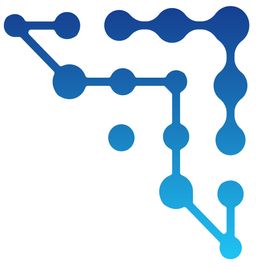How to Free Your e-Commerce Business from the AI Productivity Paradox

AI investments are riddled with pain and often end in broken dreams. For e-Commerce companies, the true promise of AI lies beyond tools and in sophisticated, flexible environments – where they can break the bottleneck and empower their teams with speed and agility.
Ryan Breen is CTO at Fastr, a digital experience composition platform built for e-commerce, and a CMS Critic Contributor.
To differentiate, e-commerce businesses need to deliver the right content to the right audiences. But the “right content” and the “right audience” change every single day.
That means you have to make data-optimized content changes at the same pace. That’s your minimum viable content velocity. But you’re stuck: meaningful content changes require developer intervention.
AI, 2024's proposed solution to all velocity problems, only exacerbates this problem. It’s boosting the content creation pace across departments faster than speeding up developer release cycles.
Presentation IS Content
The traditional approach of minor tweaks – like adjusting copy or shuffling UI elements – barely scratches the surface. These changes are superficial, allowing for only cookie-cutter modifications. What we need goes deeper, demanding a radical shift in how content is presented. This is about more than aesthetics; it’s about structural transformation.
Consider the scale of change required: the capability to serve entirely different layouts of your product detail page (PDP) to various audience segments. Take a case study where analytics reveal that users coming from search engines exhibit distinct shopping behaviors. They are more inclined to purchase related products than the specific SKU they initially viewed. The logical move? Experiment by altering the PDP layout for these users, placing related products prominently at the top, instead of their usual position below the fold.
This approach isn’t about making a single change. It’s about the ability to test a multitude of visual treatments – 5, 10, even 20 variations – to pinpoint what truly engages your audience. And this testing isn’t static; it evolves daily, adapting in real time to the insights gathered.
The AI Productivity Paradox
The advent of AI in business operations presents a profound challenge I call the “AI Productivity Paradox.”
On the surface, AI technologies promise significant productivity gains across the board. Marketing and e-commerce teams are leveraging AI to generate a flood of innovative ideas, scaling their creative output to levels previously unimaginable.
Imagine this: 20 individuals in e-commerce and marketing now produce 200 times as many viable, impactful ideas each day as they did last year, thanks to AI tools at their disposal.
To put this into perspective, consider the equation:
(A) the number of ideas generated by the team, times
(B) number of target audience segments, compounded by
(C) the multiple variants you need to test to get a strong signal
If A is now 200 and B and C are anything above 0, a development team is now staring down the barrel of a combinatorial explosion of demands. A neverending, ever-growing influx of content change initiatives that must be handled with no latency.
At the same time, every other part of the business was already waiting on development for site updates. It’s not like development teams anywhere match a business's needs for velocity. Now, this explosion of creative output from e-commerce and marketing teams – amplified by AI – will blow open an ever-widening gap in productivity.
This disparity is not just a logistical headache; it’s a strategic bottleneck that stifles innovation, slowing down the essential process of testing and learning. Without a shift towards more scalable, developer-independent systems for executing these ideas, the promise of AI-enhanced productivity is a bottleneck – not a breakthrough.
Speed Wins
In today’s e-commerce landscape, agility goes beyond making superficial tweaks with ease (and, sorry, your CTA text is superficial).
Agility is about enabling immediate, profound shifts in how content engages and converts. Traditional approaches, marked by delays and developer bottlenecks, miss the rapid pace at which market trends evolve. All content must adapt as fluidly as consumer preferences and market dynamics do, unencumbered by the grindingly slow human latency of development time.
And no: clunky, semantically void page builder components aren’t a solution. Their limited scope and bulky controls make them cookie-cutter templates with more steps. Today, we’re giving marketers components like a “carousel with 4 images.” Turning that into a labyrinth of dropdowns so they can spend hours composing a “carousel with 4 images” component into a “carousel with 4 images grouped vertically on desktop but not on mobile and with a translucency effect on hover on desktop” isn’t going to get us where we need to go.
Instead, we envision a future where developers empower e-commerce, marketing, and AI tools with the capability to design every pixel of the Product Detail Page (PDP) and sculpt every underlying interaction. This isn’t about providing a bigger box of basic tools; it’s about handing over the keys to the entire workshop. In this new world, developers focus on creating sophisticated, flexible environments that offer total creative control – environments where non-technical teams can intuitively design, test, and refine every aspect of the e-commerce experience without compromise.
By stepping away from the bottleneck and repositioning themselves as enablers, developers unlock the full potential of their colleagues in e-commerce and marketing. This shift is critical. It’s about equipping those closest to the customer with the means to apply their insights and ideas directly, in real time, without the mediation of cumbersome, limiting tools.
This is how we get something more than pain and dashed hopes from our AI investments.
This is how we overcome the AI Productivity Paradox.
Upcoming conferences

CMS Connect 24
August 6-7, 2024 – Montreal, Canada
We are delighted to present our first annual summer edition of our prestigious international conference dedicated to the global content management community. Join us this August in Montreal, Canada, for a vendor-neutral conference focused on CMS. Tired of impersonal and overwhelming gatherings? Picture this event as a unique blend of masterclasses, insightful talks, interactive discussions, impactful learning sessions, and authentic networking opportunities.

CMS Kickoff 25
January 14-15, 2025 – Tampa Bay Area, Florida
Join us next January in the Tampa Bay area of Florida for the third annual CMS Kickoff – the industry's premier global event. Similar to a traditional kickoff, we reflect on recent trends and share stories from the frontlines. Additionally, we will delve into the current happenings and shed light on the future. Prepare for an unparalleled in-person CMS conference experience that will equip you to move things forward. This is an exclusive event – space is limited, so secure your tickets today.
